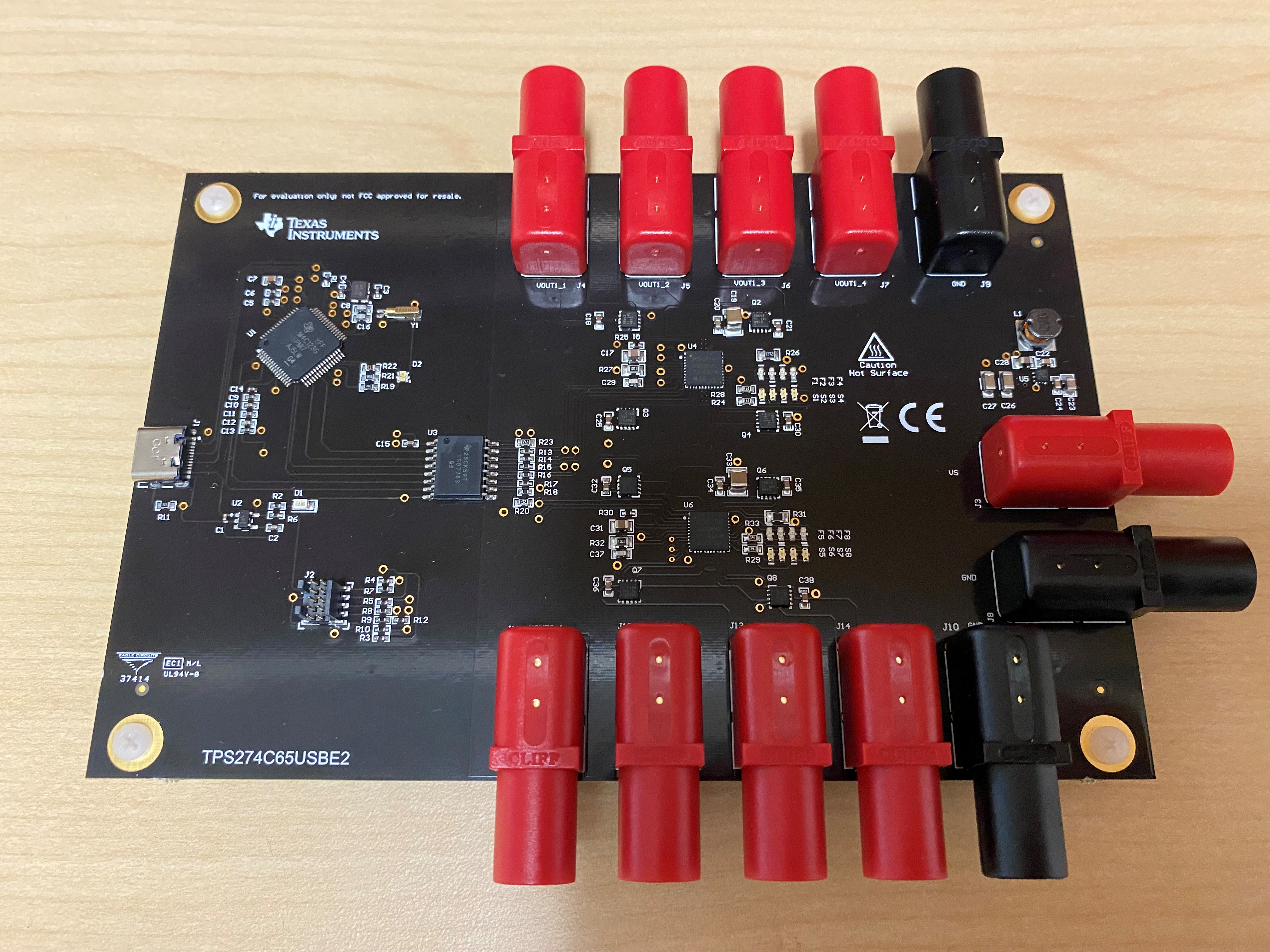SLVUCN6 February 2023 TPS274C65
5 Introduction
The TPS274C65USBEVM is an application level evaluation module made to showcase the powerful power delivery features of the TPS274C65 industrial high-side switch. The TPS274C65USBEVM is meant to mimic a real-world industrial end-application and thus comes with features such as an integrated TM4C ARM Cortex-M4F microcontroller, digital isolation, multiple high-side switches connected to the MCU via SPI, and compact layout design with limited test-points. In addition to the hardware EVM, a software package of both the firmware running on the TM4C microcontroller (written in embedded C) and a host GUI with source code are provided to be used as a reference in the end application.
Features include:
- 2 x TPS274C65 65mΩ
quad-channel industrial high-side switches placed in "addressable SPI"
configuration
- Provides 8x total independent output channels with parallel configurations supported
- Adjustable current limit with special inrush duration control for capacitive charging
- Integrated ADC allowing for high-accuracy reporting of current sense, FET temperature, and input/output voltage
- Integrated TM4C123 ARM
Cortex-M4F microcontroller with USB host interface
- Plug-and-play operation using USB-HID with no need for customer driver installation
- Pre-programmed firmware with no need for an external debugger
- External programming of custom firmware possible via 10-pin ARM debugger
- Full-featured and lightweight
Windows host GUI for device configuration and monitoring
- Ability to configure/change all register settings of both TPS274C65 devices including current limit, diagnostic configurations, etc.
- Reporting/sensing of load current, FET temperature, and input/output voltage with active graphing
- Fault monitoring and reporting for full array of fault conditions such as current limit, thermal faults, open load/wirebreak, etc.
- Complete digital isolation from digital and high-current rails using the ISO7763DWR reinforced isolation device
 Figure 5-1 Board Image
Figure 5-1 Board Image